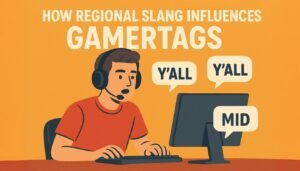The gamertag, username, or online handle is more than just an account login—it’s a core piece of your digital identity. Over the past 25 years, this digital moniker has undergone a profound transformation, mirroring the changing culture of gaming itself. What began as a tool for aggressive anonymity in the early 2000s has become a carefully curated personal brand by 2025.
The core shift can be summarized as the move from intimidation to identity.
Phase 1: The Age of Anonymity (2000-2010)
The early days of online gaming were defined by anonymity and a desire for an edgy, intimidating persona. This era split into two distinct, yet related, camps.
The ‘Edgy’ Era (2000-2005)
When platforms like early Xbox Live and PC LAN environments took off, the goal was often to appear tough or mysterious. The default naming convention was heavily influenced by l33t speak (leet) and excessive use of symbols.
- Intimidation was Key: Names often included words like Dark, Shadow, Slayer, or Demon.
- The Symbol Standard: Underscores (_) and capitalized x’s (Xx) were essential structural elements, designed to look cool and separate the name from the boring simplicity of the real world.
- Classic Example: Names like
xX_DarkSlayer_XxorSniper1337were the standard, reflecting a focus on aggressive skill and a clear attempt to signal danger.
The ‘Random’ Era (2006-2010)
As the mainstream adopted platforms like the Xbox 360 and PlayStation 3, the seriousness began to fade. The counter-culture to the “Slayers” became the comedians. Names became nonsensical and often referenced internet memes or food. The goal was to be funny, not feared. This movement was characterized by its randomness and lack of commitment to any serious persona. A_Wild_Potato or WaffleCoptr were perfectly acceptable handles, signaling a relaxed, communal approach to gaming.
Phase 2: The Branding Boom (2011-2018)
The rise of Twitch and professional esports completely revolutionized the purpose of a gamertag. It stopped being a disposable handle and started becoming a professional asset.
If a player wanted to be a streamer or a professional competitor, their name had to fulfill two critical business functions: memorability and simplicity.
- Short and Unique: The excess symbols and numbers vanished. Names had to be short, often just one word, making them easy to type, tweet, and chant.
- The Power of the Moniker: Influential personalities adopted strong, simple names like Ninja, Shroud, or Vex. These names were chosen not for their l33t status, but for their aesthetic appeal and marketability.
- Platform Consistency: This era was the first where users started caring about having the same name across multiple platforms (Twitch, YouTube, Twitter) to build a consistent personal brand.
Phase 3: The Uniqueness Crisis (2019-2025)
The present day is defined by one fundamental problem: The Uniqueness Crisis. After 25 years, all simple, desirable names are taken. This forced the gaming community into two distinct paths for digital identity.
The Aesthetic Vibe
Since the great one-word names are gone, players have pivoted to names that convey an aesthetic or a vibe rather than an action or a skill. This trend is heavily influenced by TikTok and visual social media, where a handle must communicate a mood or style.
- Vibe over Violence: Modern names often combine two unrelated but atmospheric words. Examples include
CozyGamer,PixelGrove, orSynthwaveRider. - Creative Misspellings: To secure a name, users resort to subtle changes that still read correctly, such as using an ‘i’ instead of an ‘y’ or substituting a number for a letter (e.g.,
Luumininstead of Lumin).
The Authentic Pivot
For many gamers, the best solution to the crisis is to abandon the idea of a “gamertag” altogether and simply use their established real-world handles. If a user is known as “TheRealSarah” on Instagram, Twitter, and TikTok, they will use that exact name (or as close as possible) in their games. This prioritizes authenticity and cross-platform consistency above all else.
The Future of the Name
The evolution of the gamertag is a microcosm of the internet’s shift from anonymous playground to integrated digital life. We have moved from hiding behind aggressive aliases to building public, cohesive brands.
As gaming platforms start to allow users to change their display names more easily, and as we move toward metaverses where true digital identity is paramount, the gamertag will likely continue to merge with our social media and professional identities. The era of the DarkSlayer is officially over, replaced by a focus on the Cozy, the Authentic, and the Brandable.
Where do you think the next major shift in online naming will come from? Do you see a return to anonymity, or will brands become even more crucial?



